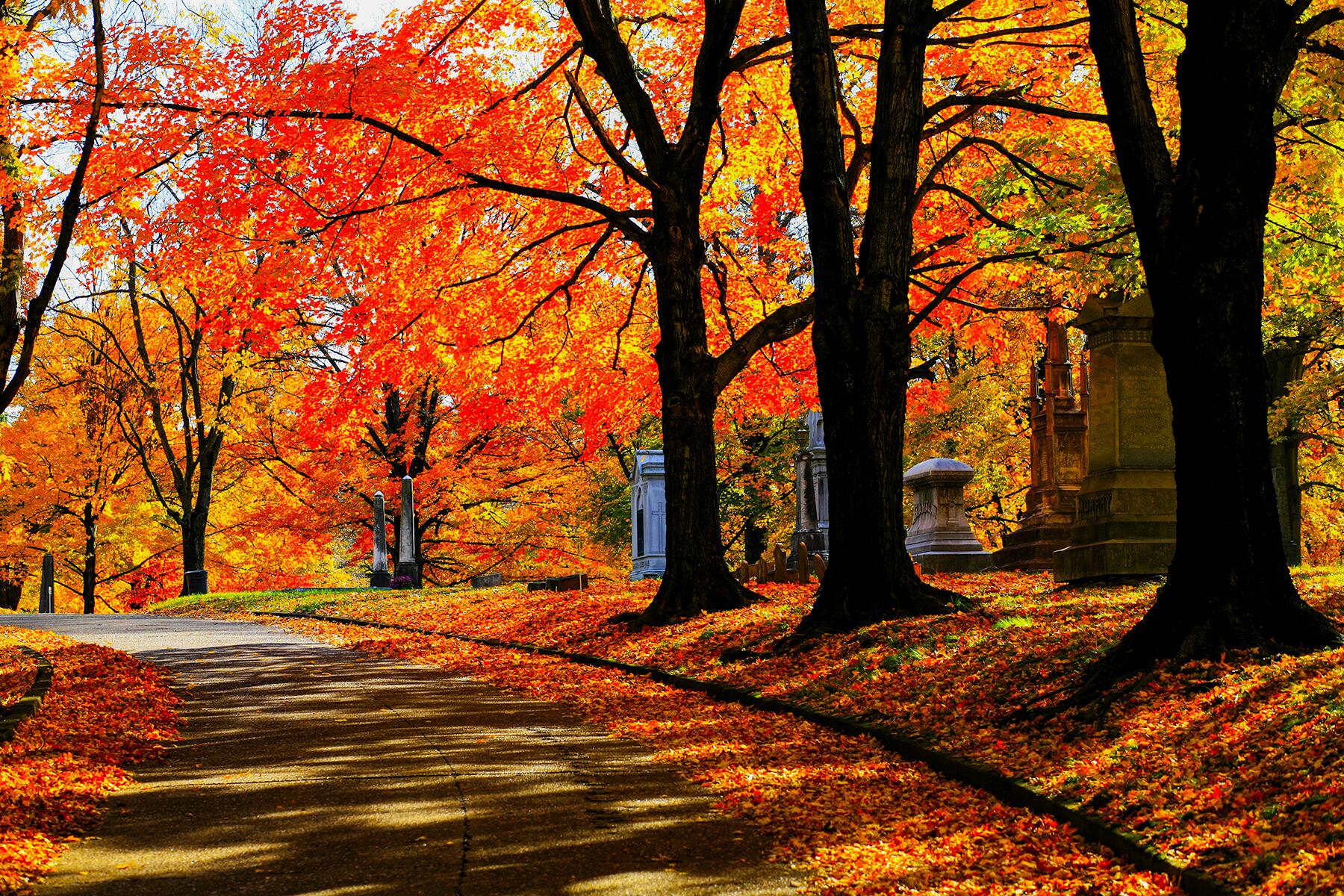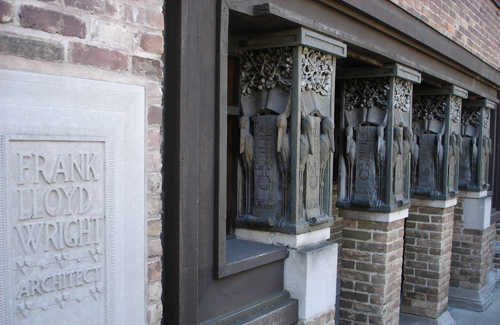
America’s most influential architect designed hundreds of structures and is especially known for his Prairie-style buildings and organic influences. From to a newly renovated hotel to a Manhattan museum, here’s a list of the best Frank Lloyd Wright sights—in order from the construction date—that are the most innovative and provide the best experience for visitors.

Wright Home and Studio: Oak Park, Chicago
From the street, Frank Lloyd Wright's home and studio (1888–1898) may seem lacking his characteristic style. But a closer look reveals intricate stylized details and and a more dramatic sideview. Designed when he was just 22, the architect worked and lived here for 20 years. In addition to the "Birthplace of Prairie style," the Chicago neighborhood of Oak Park is also home to Wright's famed Unity Temple.
Learn more: Frank Lloyd Wright's Home and Studio Website

Darwin D. Martin House: Buffalo, New York
One of several Buffalo-area Wright sights open to the public, the Darwin D. Martin House Complex (1902–1907) is best known for it's innovate Prairie-style construction. At this writing, several of the buildings are undergoing restoration work but tours are still available to experience the open-plan interiors.
Learn more: Buffalo Area Wright Sites
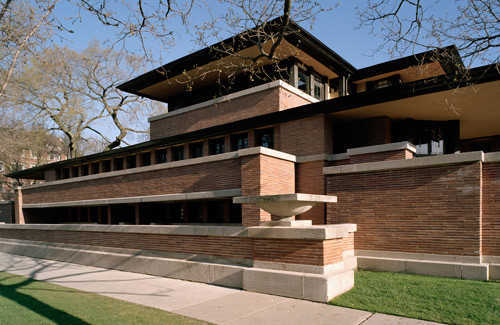
Robie House: Chicago, Illinois
Closer to downtown Chicago then Wright's Oak Park home and studio, the Robie House (1908–1910) is another example of the "long and low" Prairie style that would become a hallmark of Wright's career. Take a tour to get a closer look at the home's small and large innovations, ranging from an intercom system to the three-car garage.
Learn more: Robie House Review
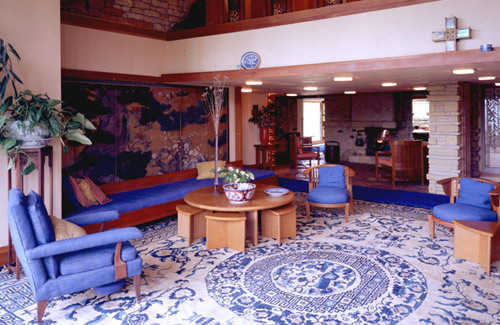
Taliesin: Spring Green, Wisconsin
Like the bow of a ship, Wright's Wisconsin home rises above the surrounding hills. From the initial construction in 1911 up to the architect's death in 1959, the estate's buildings were constantly changing—through new construction and 2011 marks the estate's centennial. Be sure to explore beyond the grounds and choose a tour that includes the interiors, which showcases Wright's many influences, such as Japanese art.
Learn more: Taliesin Review

Hollyhock House: Los Angeles, California
Part of L.A.'s Barnsdall Park, Hollyhock House was planned as the centerpiece of an arts community. While Wright's own take on California style was finished in 1923, the theaters and artist dorms were never constructed. You can watch an informative video about the building's history at the Municipal Art Gallery, which also runs tours of the property. Look for the repeated flower motifs amid the concrete construction and the namesake hollyhocks outside.
Learn more: Barnsdall Park and Hollyhock House Review

Imperial Hotel: Tokyo, Japan
While this Tokyo hotel was demolished in 1968 after a massive earthquake, the 1923 lobby has been reconstructed at the Meiji-Mura hotel. Significant on its own merit, it's also a great opportunity to reflect on the influences of traditional Japanese style throughout all of Wright's work.
Learn more: Meiji-Mura Museum Review

Taliesin West: Scottsdale, Arizona
Wright's Arizona home and studio (not to be confused with Taliesin in Wisconsin), is well worth the detour from downtown Scottsdale. The "desert camp" uses natural elements that blend into the surrounding Sonoran landscape, is a striking example of the artist's influence on organic architecture. Construction began in 1927 and students who still come to learn surrounded by Wright's legacy in Taliesin West's theaters and working studios.
Learn more: Taliesin West Review, Spotlight on Frank Lloyd Wright and Taliesin West

Fallingwater: Mill Run, Pennsylvania
The woodsy setting is no mere backdrop for Fallingwater, but rather an integral part of the dramatic design—the cantilevered home seems to defy gravity above the flowing water. Just 90 minutes outside of Pittsburgh, the 1936 home is arguably the most famous of Wright-designed private residences and can be experienced through a variety of tours. Also nearby is another FLW home, Kentuck Knob.
Learn more: Fallingwater Review, Fallingwater's 75th Anniversary
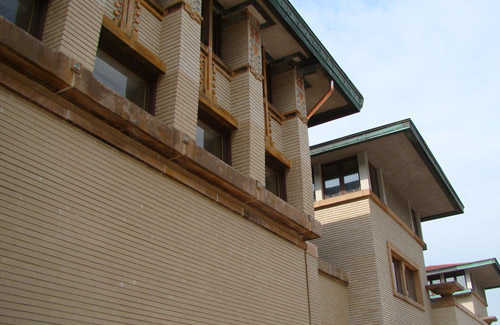
The Historic Park Inn Hotel: Mason City, Iowa
Reservations are now being accepted for mid-September and later at this renovated Prairie-style masterpiece, the only Wright hotel still standing. After ten years as a hotel (1910–1920), the structure was later modified for commercial and retail space as well as apartments. Partitions and an extra floor have now been removed while furnishings and details from other Wright homes have been reproduced. Guided tours will be available, but true Wright fans will want to stay overnight in the "Historic Room" suite that adheres strictly to the original space or one of the other 26 rooms with more modern elements.
PLAN YOUR VISIT: Wright on the Park Website

Guggenheim Museum: New York, New York
In the middle of New York City's Museum Mile, the Guggenheim stands in stark contrast to the surrounding classical institutions. The iconic swirling design is as much a part of the interior as the exterior, and provides a striking setting for the modern art on display. As one of Wright's last major works, the building opened to the public in 1959, shortly after his death.
Learn more: Solomon R. Guggenheim Museum Review
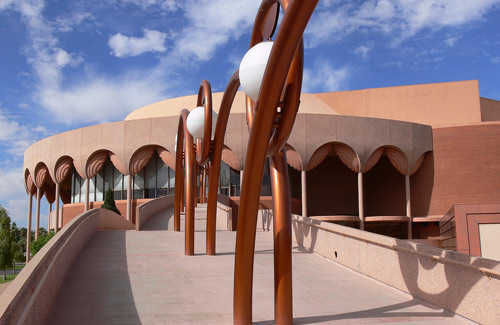
Other Favorite Frank Lloyd Wright Sites
140 Maiden Lane Review: San Francisco, CA
Arizona Biltmore Resort & Spa Review: Phoenix, Arizona
ASU Gammage Auditorium Review: Tempe, Arizona (pictured)
Charnley-Persky House Museum Review: Chicago, Illinois
Heller House Review: Oak Park, Illinois
Rosenbaum House Website: Florence, Alabama
Rookery Review: Chicago, Illinois
Unity Temple Website: Chicago, Illinois
Zimmerman House Review: Manchester, New Hampshire


